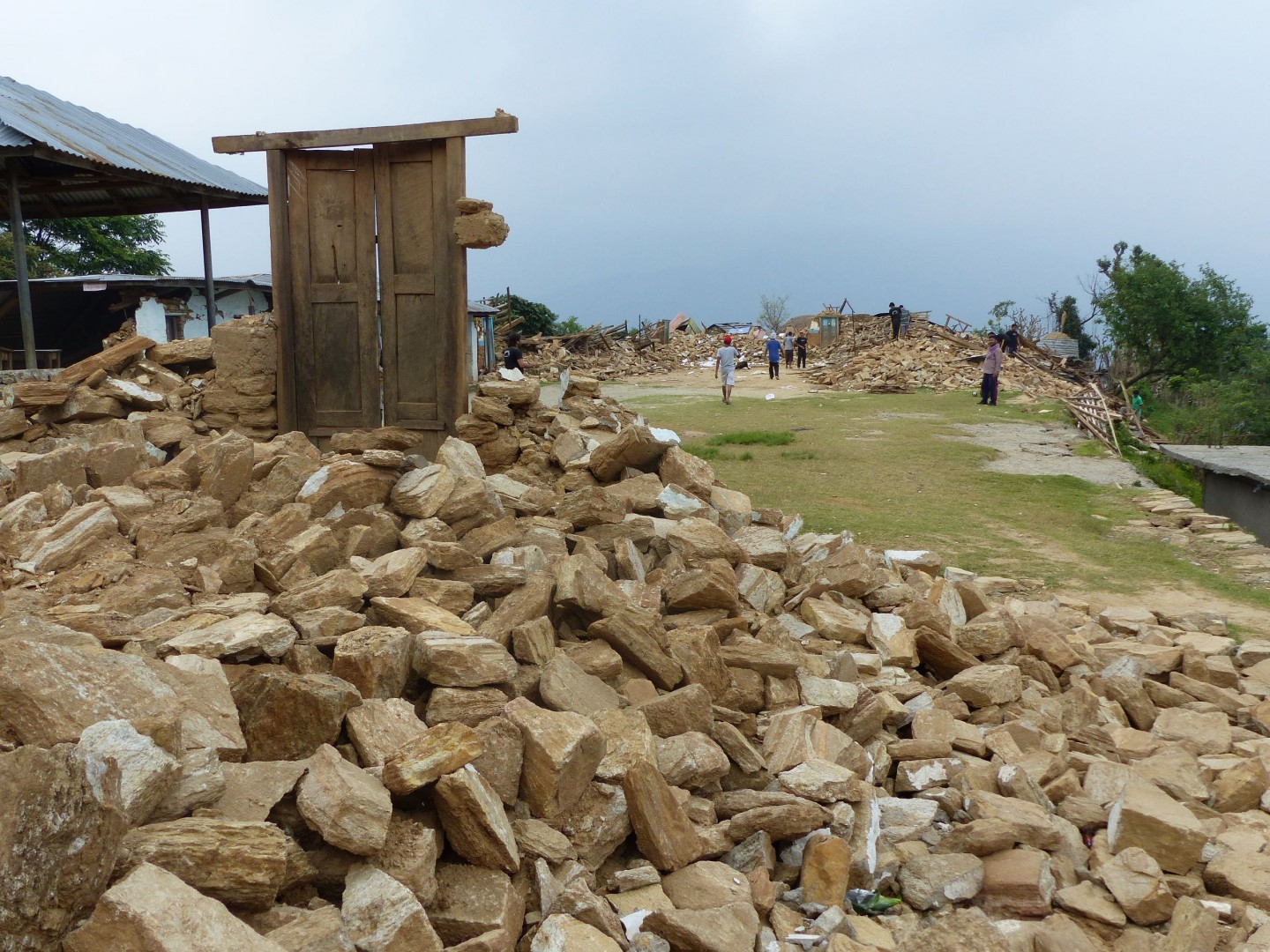On April 25, a twice-in-a-century 7.8-magnitude earthquake struck Nepal. This was the earthquake that everyone knew was coming—we just didn’t know exactly when it would arrive. Nepal is positioned at the intersection of the Eurasian and Indian tectonic plates, and seismic activity is not surprising.
But, in a landlocked, developing country with an inconsistent government, a population dispersed across difficult terrain, extreme social stratification and relatively little money, the effects of the earthquake and its subsequent 200-plus aftershocks have been devastating.
Over 8,000 people have died in the original quake and the 7.3-magnitude aftershock of May 12, and the millions who survived in the worst-hit districts are dealing with serious injuries, post-traumatic stress, homelessness and loss of livelihoods. At least half a million homes either collapsed or are now damaged beyond repair, a staggering number that will likely rise as more assessments are conducted in remote areas.
The physical, social and economic implications for Nepal are, frankly, depressing. Living through the original earthquake and almost daily aftershocks is nerve-wracking, and it’s hard to find a silver lining just yet.
But, one aspect of earthquake relief that has emerged as both an effective strategy and a feel-good story is the response of average citizens buying, transporting and distributing essential survival items to heavily affected, and often very hard-to-reach, areas.
Thousands of Nepali citizens have spearheaded hyper-local earthquake relief efforts. People who left their home villages to work in Kathmandu or abroad—millions of Nepalis are labor migrants in Malaysia, Saudi Arabia, Qatar and other countries—are a major source of income for their home villages. They’re also in the special position to mobilize their personal networks and local knowledge to procure supplies in the capital of Kathmandu and organize jeep or truck convoys to villages, often dealing with logistical and security obstacles like landslides on mountain roads and opportunistic authorities who have tried to intercept supplies for their own use.
You can see evidence of these localized, personal relief efforts on social media. Crowdfunding campaigns and Facebook pages have popped up dedicated to relief efforts in specific districts and villages. Average Nepali citizens unaffiliated with non-governmental organizations (NGOs) or formal aid organizations have ventured into heavily affected districts like Sindhupalchok, Dolakha, Gorkha and Rasuwa and have posted reports of road conditions, the extent of destruction, local needs and health problems. These updates help other groups of individuals who are ferrying supplies by road to villages that neither the government nor international aid organizations have reached yet.
Last weekend, I helped a friend rent a truck and fill it with supplies identified as urgently needed by her relatives in her home village of Ramche in Gorkha district—the epicenter of the original earthquake, and an area in which 90 percent of homes were destroyed. With just a few days of dedicated efforts, she and her family were able to find a truck to rent, a driver, a cousin to help load it and supplies such as gas-powered stoves and gas tanks, cooking oil and utensils, large tarps, bags of rice and vegetables, mosquito coils and other items.
Our journey to Ramche took 23 hours round trip from Kathmandu; the length and difficulty of the trip underscored the obstacles that rural villages will face in long-term rebuilding: namely remoteness, terrible roads at risk of landslides and inconsistent access to communication technology.
Groups of individuals are making trips like this daily, getting supplies to the people who need them most, and who might be excluded from mainstream relief efforts because of their inaccessibility.
Despite current despair and uncertainty, I do not doubt that Nepali people will rebuild their nation from the ground up, likely in the same manner as they have steadfastly organized earthquake relief efforts: with an even-tempered approach to seemingly insurmountable physical and economic obstacles and with dedicated networks of family and friends here and abroad.
The author is a DU alum (MA, Korbel School of International Studies ’13) and Fulbright-Clinton fellow currently living in Kathmandu, Nepal.










